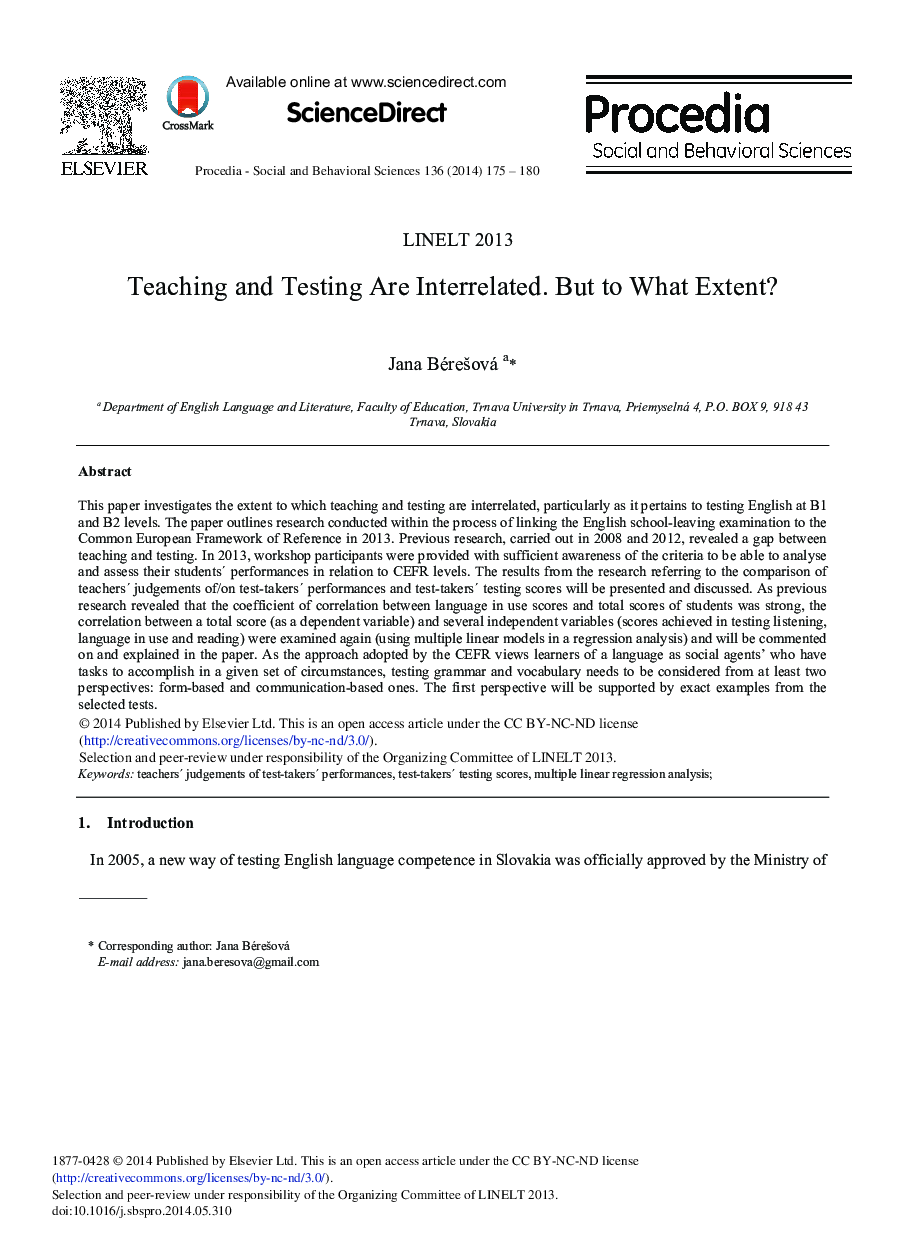| Article ID | Journal | Published Year | Pages | File Type |
|---|---|---|---|---|
| 1113542 | Procedia - Social and Behavioral Sciences | 2014 | 6 Pages |
This paper investigates the extent to which teaching and testing are interrelated, particularly as it pertains to testing English at B1 and B2 levels. The paper outlines research conducted within the process of linking the English school-leaving examination to the Common European Framework of Reference in 2013. Previous research, carried out in 2008 and 2012, revealed a gap between teaching and testing. In 2013, workshop participants were provided with sufficient awareness of the criteria to be able to analyse and assess their studentś performances in relation to CEFR levels. The results from the research referring to the comparison of teacherś judgements of/on test-takerś performances and test-takerś testing scores will be presented and discussed. As previous research revealed that the coefficient of correlation between language in use scores and total scores of students was strong, the correlation between a total score (as a dependent variable) and several independent variables (scores achieved in testing listening, language in use and reading) were examined again (using multiple linear models in a regression analysis) and will be commented on and explained in the paper. As the approach adopted by the CEFR views learners of a language as social agentsʼ who have tasks to accomplish in a given set of circumstances, testing grammar and vocabulary needs to be considered from at least two perspectives: form-based and communication-based ones. The first perspective will be supported by exact examples from the selected tests.
